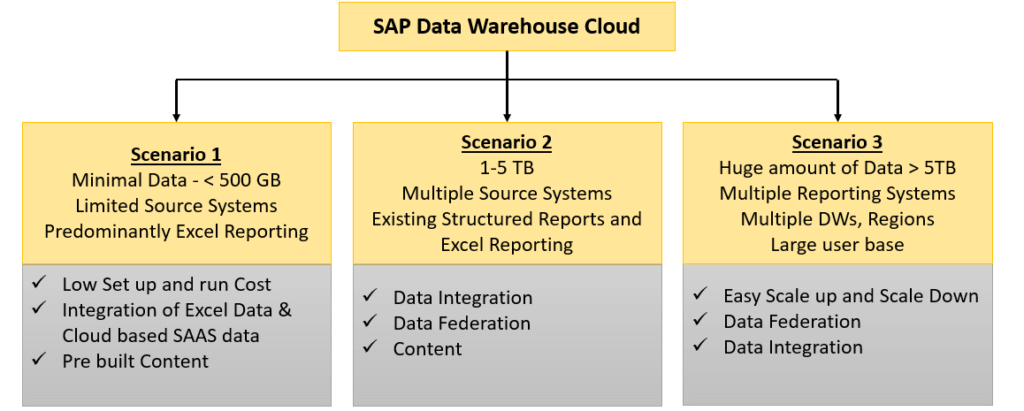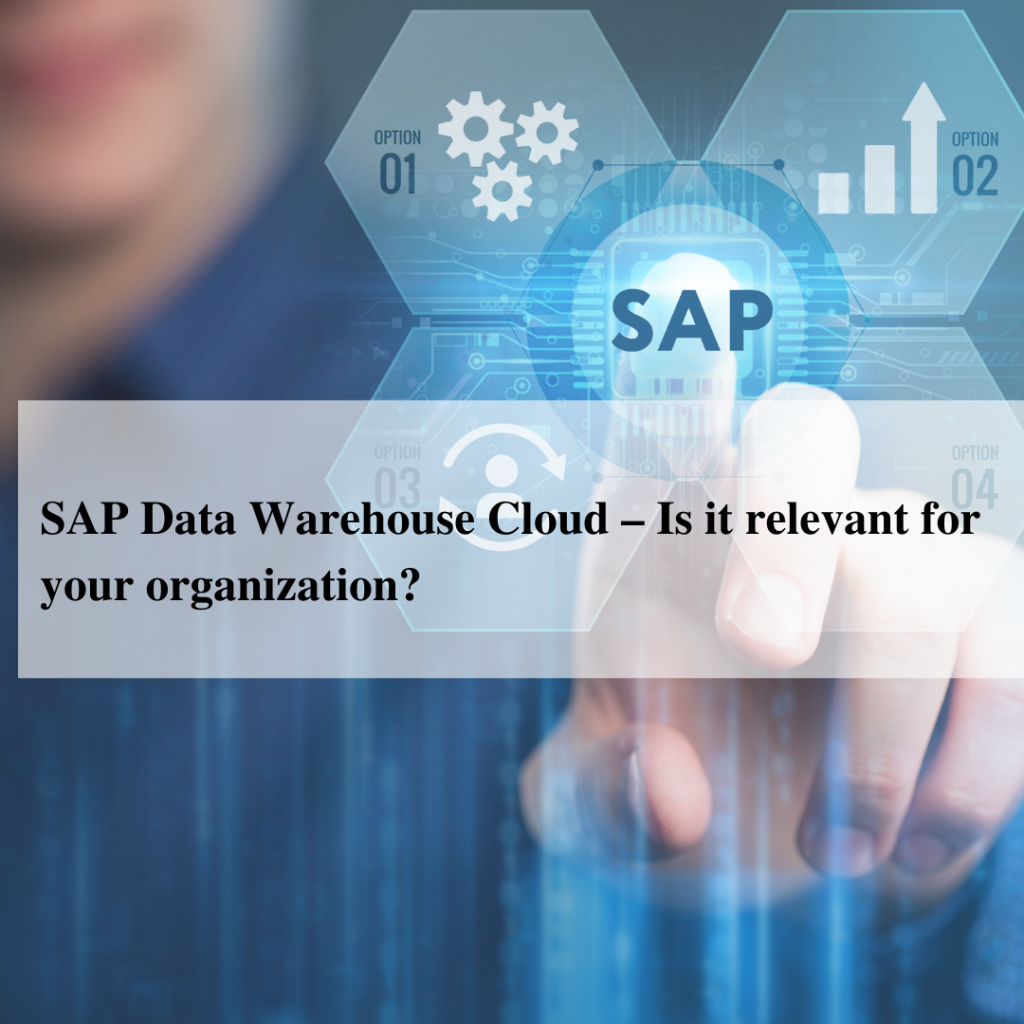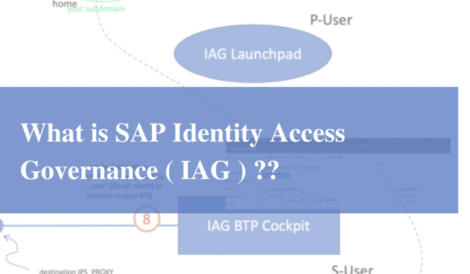SAP Data Warehouse Cloud – Is it relevant for your organization?
SAP Data Warehouse Cloud (SAP DWC) is the latest modern cloud data warehousing solution by SAP. It competes with Redshift, Google Big Query, Azure Synapse, Snowflake, and other similar cloud-based SAAS DW products. SAP brings to the table its decades of data warehousing innovation with this product.
In this blog, we tried to look at possible use cases within organizations where we classified organizations on some common scenarios we see when we talk to our customers. The scenarios vary based on the data volume, type and number of source systems connectivity, user base, and variety of reports. These use cases illustrate the multiple benefits that SAP Data Warehouse Cloud provides under each fitment.

SAP Data Ware house Cloud- Scenario
Scenario – 1
Minimal Data – < 500 GB
Limited Source Systems Predominantly Excel Reporting
1. SAP DWC could be a cost-effective solution for starting your modern data warehousing journey with SAP DWC or looking to extend your current data warehousing solution. You can start small and expand on your needs.
2. SAP DWC is equipped with rich connectivity support to most SAP sources and other non-SAP sources like Amazon Cloud Storage, Google Big Query, Microsoft Azure, Generic JDBC connectivity, local CSV files, and many more.
3. Using SAP DWC, you can benefit from the power of HANA.
4. You can run advanced analytics using SAP Analytics Cloud, which comes embedded into SAP DWC.
5. Empower your business users by giving them access to the virtualized working areas called Spaces, which contain connections to the systems in your landscape and the models.
6. You can also consume the data from Excel to wrangle the data if required to fit your needs.
Scenario – 2
Huge amount of Data > 5TB
Multiple Reporting Systems Multiple DWs, Regions Large user base
1. When you have multiple source systems across multiple regions – both SAP and non-SAP sources, data lakes, etc., you can still connect to SAP DWC.
2. It could be a single place for all your data governance needs, and SAP DWC could become your central data store.
3. Say you are a manufacturing company spanned across multiple regions. You may need to do sales analysis along with planning and forecast using data from the Hyperion system & sales data from SAP.
4. Modeling of data has become easier in an intuitive and graphical way.
5. Business users can jump-start into the modeling at the business layer using the data they have in a spreadsheet or local files which can be later replaced with actual SAP DWC models.
6. Business users can now easily access enterprise data. You can eliminate the data silos, which is a bigger problem in the current scenarios.
7. The users can always have access to the single source of truth in SAP Data Warehouse Cloud. The logical work areas called Spaces logically separate the data from different LOBs. Your business users can have access to their specific business and functional areas only. This ensures data separation and function-specific semantics, making it easier for your analysts.
8. Say you have financial reports used by multiple users simultaneously, and you see the latency, then you can immediately scale up the system resources to meet your demands.
9. With growing demands, you sense that storage is not enough. Scaling up of memory is just a click away in SAP Data Warehouse Cloud. With this model, licensing and cost become more transparent and controlled by your needs.
10. SAP DWC is loaded with prebuilt business content for multiple domains which can be readily consumed.
11. SAP Analytics Cloud is closely Integrated with SAP DWC, which is the defacto platform for running all your reports and dashboards. The planning and prediction capabilities make it a powerful add-on.





